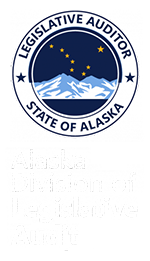| SUMMARY OF: | A Special Report on the Departments of Administration and Revenue, Public Employees’ Retirement System, Teachers’ Retirement System, and Alaska State Pension Investment Board, Selected Issues. |
Report Conclusions
In accordance with Title 24 of the Alaska Statutes and a special request by the Legislative Budget and Audit Committee, we have conducted an audit of selected issues related to the Public Employees’ Retirement System (PERS) and the Teachers’ Retirement System (TRS) and their respective former oversight boards. In addition, our audit included selected issues regarding the Alaska State Pension Investment Board (ASPIB).
The purpose of this audit was to review and assess the fiscal history of the state-administered PERS and TRS (Plans). Both plans currently face significant projected unfunded liabilities. Our primary objective was to review the past decisions made by the PERS board, the TRS board, and the ASPIB to assess to what extent, if any, the boards’ decisions contributed to the plans’ current unfunded liabilities.
Scope
The scope of the audit varied depending on the audit objective.
- PERS and TRS employer contribution rate decisions – Adopted rates for FY 90 to FY 06 were reviewed for consistency with the consulting actuary’s calculations and advice.
- ASPIB asset allocation decisions – Adopted asset allocations for FY 99 to FY 05 were reviewed for consistency with the Treasury staff and investment consultants’ advice.
- PERS and TRS funding ratios – Funding ratios from July 1, 1992 through June 30, 2000 were reviewed to determine the internal and external factors causing the changes in ratios with a focus on the period July 1, 1999 through June 30, 2004.
- Other state public pension plans – Five public employees’ pension plans and five teachers’ retirement plans were selected from 127 public pension plans surveyed by the National Association of State Retirement Administrators in 2004.
Report Conclusions
A summary of the conclusions follows:
- It is unclear if state law mandates that retirement funds maintain funding ratios of 100 percent.
- Decreases in funding ratios were primarily due to investment losses and rising medical costs.
- Rate-setting decisions had a small impact on each Plan’s declining funding ratios. In three instances, the PERS board set rates below the former consulting actuary’s calculated rates.
- TRS did not adopt the annual actuarially-calculated employer contribution rate, but rather set a level rate as recommended by the consulting actuary.
- Administrative decisions of oversight boards had limited impact on the Plans’ liabilities.
- Regulations with financial effect need to be updated.
- Asset allocations were more conservative, but investment returns were consistent with those of comparable retirement plans in other states.
- An administrative two-year lag between determining the contribution rates and using them has contributed slightly to the Plans’ declining funding ratios.
- Recent state appropriations partially offset higher contribution rates faced by participating employers.
Findings and Recommendations
The director of the Division of Retirement and Benefits (DRB) should review and update the Public Employees’ Retirement System’s and the Teachers’ Retirement System’s (Plans) regulations.
Certain regulations that financially affect the Plans have not been updated for a number of years. According to the DRB staff, the division has contracted with a former assistant attorney general to review the existing Plans’ statutes and regulations and provide potential revisions to the commissioner of the Department of Administration early in 2006. We recommend that certain regulations be considered for change under this review.

